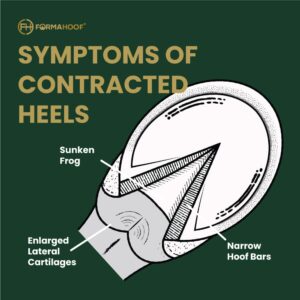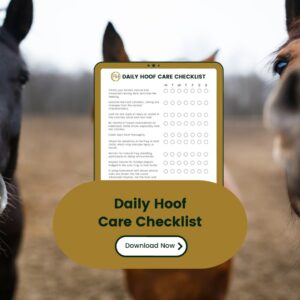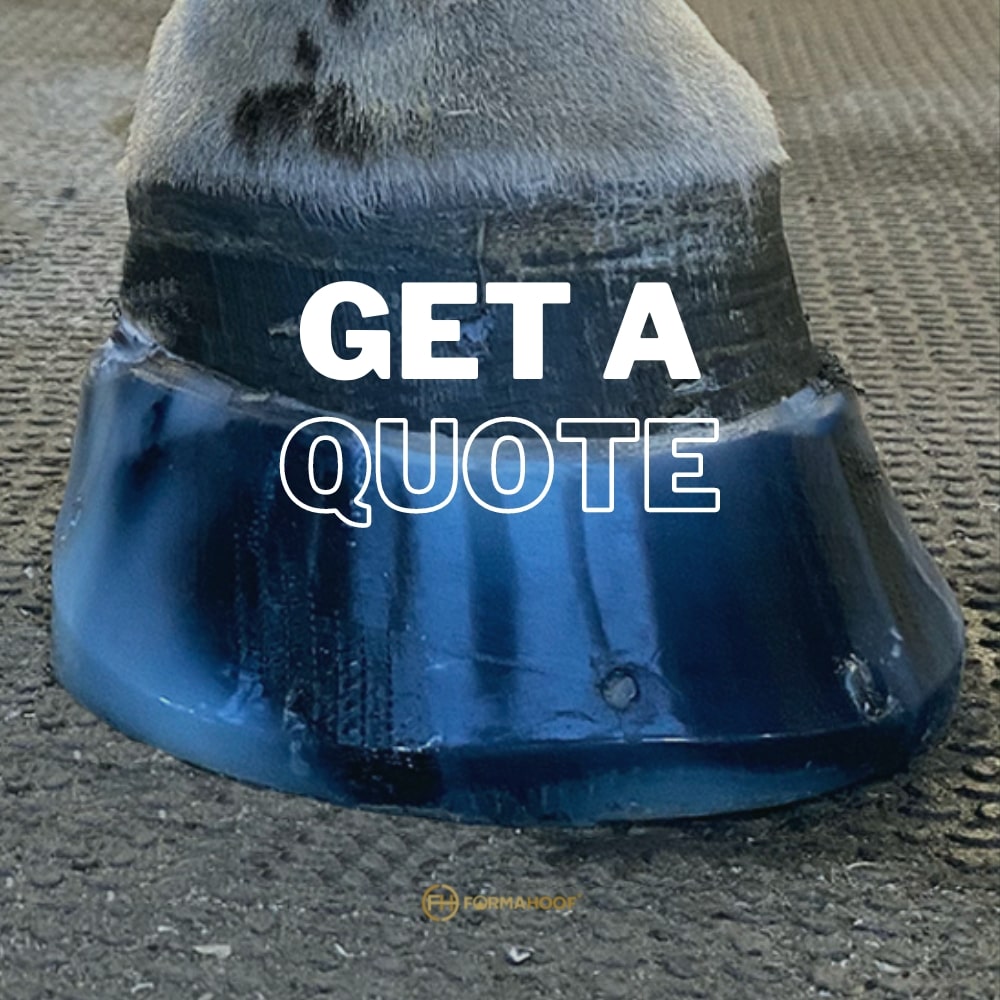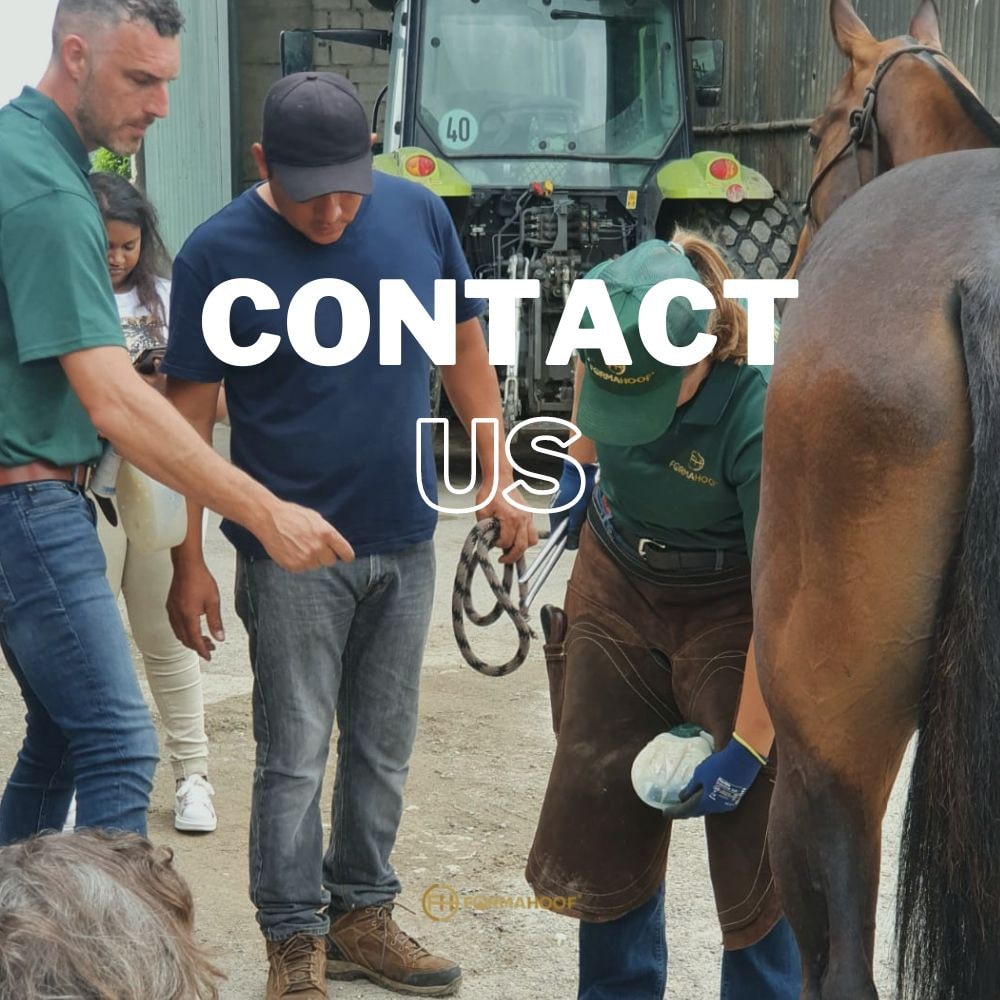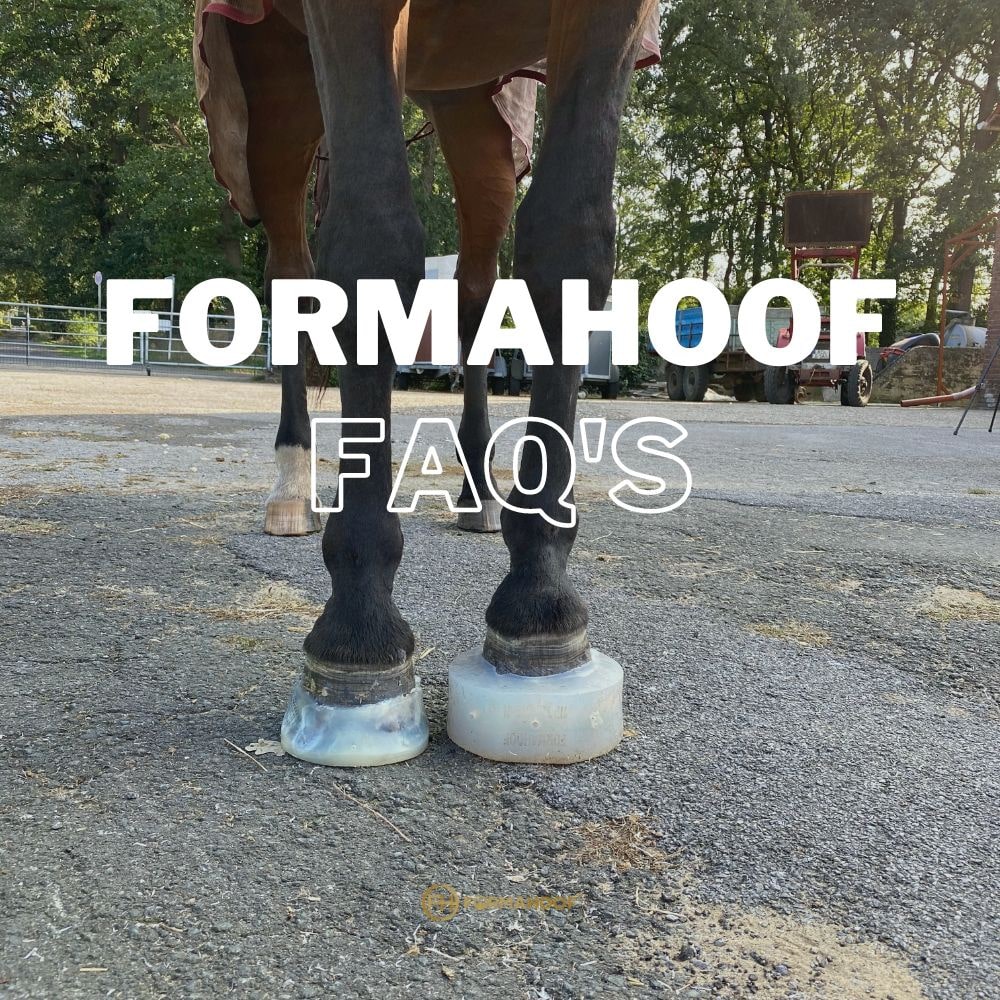In the sweltering embrace of summer, equestrian enthusiasts revel in the charm of long rides and the tranquil ambiance that nature generously unfolds. However, beneath the euphoria of these sun-drenched moments lies a crucial aspect of horse care that often goes unnoticed: their hooves. As the adage warns, “No hoof, no horse,” underlining the indispensable role of optimal hoof health in safeguarding the wellbeing and mobility of these majestic creatures.
In summer, the ubiquitous dryness and sporadic rains creates a series of challenges, prompting the hooves to oscillate between extremes of dryness and moisture, fostering conditions ripe for cracks, brittleness, and other disorders. Thus, ensuring the vibrancy of your horse through the sunny days mandates a meticulous approach towards summer hoof care, transcending basic routines to embody a blend of nutrition, expert advice, and dedicated care.
A Healthy Equine Foot in Summer
Trotting beneath the golden sun, a horse’s hooves endure incessant trials, encountering grounds ranging from parched terrains to occasional dampness. The perpetual interchange between dry and moist conditions not only propels the hoof towards brittleness but also demands an understanding of its intricate anatomy and the rhythm of its seasonal needs.
A horse’s hoof, encapsulating a network of laminae, bones, and soft tissues, orchestrates a symphony of movement, absorbing shocks and providing traction. The summer heat, while a harbinger of dry, challenging terrains, also extracts the natural moisture from the hooves, rendering them susceptible to hoof cracks, chips, and in severe instances, lameness. This susceptibility not only impedes the horse’s mobility but also becomes a doorway to infections and diseases.
Expert Insights: Decoding the Moisture Enigma
Belgian Farrier and FormaHoof Expert, Bart Lambert, casts light on a pivotal, yet commonly misinterpreted element: moisture. Bart advocates for a balance, elucidating:
“Regular moisturising of the feet during summer is cardinal. But the methodology demands precision. Imagine bathing in oil; the water simply cascades away, ineffective. Similarly, oiling a horse’s hooves before moistening them can repel essential hydration.”
Bart’s methodology underscores a two-step approach: First, soaking the hooves to replenish lost moisture and, second, sealing it with hoof oil or balsam. Here, the balsam doesn’t just retain moisture but also shields the hooves from the harshness of the external environment, ensuring suppleness and flexibility.
FormaHoof, renowned for its ability to encapsulate the hoof, crafting a sterile, controlled environment to promote optimal hoof health. This encapsulation not only safeguards the hoof from the external milieu of bacteria, debris, and unregulated moisture but also affords equestrians the unique opportunity to curate a habitat within, which mirrors the idyllic conditions for hoof growth and repair.
Within this secure cocoon, moisture levels can be regulated, mitigating the pervasive threats of both desiccation and excessive dampness prevalent in the summer months. FormaHoof, therefore, transcends mere protection, metamorphosing into a medium through which the hoof can regenerate, fortified by the balanced, pristine environment enshrouded by the FormaHoof application.
Nutrition: The Pillar of Hoof Resilience
Nowadays we regularly hear the phrase ‘you are what you eat’ in relation to our own diet and its health implications, and it’s no different for our horses. In equines, a healthy foot starts with a healthy diet and there are several factors that come into play when providing the best diet to support your horse’s hooves and to help avoid diseases such as laminitis. Let’s take a look with resident Equine Nutritionist Lisa Elliott (MSc).
Fats And Oils
Summer weather brings its own challenges with the hot and dry days promoting dry and brittle hooves which will crack and chip, especially when working on hard surfaces. In addition, summer can also bring bursts of wetter weather alongside the dry heat. Going through wet-dry-wet-dry-wet-dry conditions can further promote cracking, chipping and peeling of the hooves.
Hooves contain phospholipids, which have segments that can both attract and repel water to help maintain correct moisture balance in the face of changing summer conditions. Fats provide key phospholipids, alongside Omega 3 fatty acids which have an important role in hoof structure and integrity.
Both of these are essential when combating both wet and dry conditions in a typical summer, to build healthy, resilient hooves which are less likely to become damaged or cracked. Alongside fresh grass, linseed meal is an excellent source of Omega 3 fatty acids and provides good levels of phospholipids, which is particularly beneficial if your horse has restricted access to fresh grass.
Vitamins And Minerals
A healthy, strong hoof is less prone to cracking and chipping, so providing a balanced diet which supplies a range of nutrients, including vitamins and minerals for strong, healthy hooves, is essential throughout the summer season.
Key nutrients for health and strength in hooves include zinc, copper, biotin, and a good supply of essential amino acids such as Lysine and Methionine. Providing a targeted hoof supplement, which both supply optimal levels of key nutrients alongside all-round hoof benefiting nutrition, will help maintain strength and soundness throughout the summer and help to avoid common hoof problems.
Weight Management
Summer is a time when horses can be prone to gaining a few extra lbs, which can have a knock-on impact on hoof health. Excess weight can put a strain on joints and ligaments, whilst also predisposing horses to equine metabolic syndrome (EMS), which can result in hoof-related problems such as laminitis.
Maintaining your horse at a healthy weight and the optimal condition is essential for overall health and well-being and to help prevent disease. Regular use of a weight tape coupled with a Body Condition Score Chart (BCS) will help you to monitor weight and condition. You can then adjust your horse or pony’s diet, management, and exercise as necessary to help maintain an ideal BCS of 5 on a nine-point scale.
Exercise helps burns calories, increases fitness and improves insulin sensitivity in horses with EMS. Regular exercise, ensuring your horse is always engaging in an active walk and trot, is great for burning fat and reducing those lbs to help maintain a healthy weight. Additionally, exercise has great benefits for hoof health and integrity because movement promotes blood circulation, pumping blood through the hooves to provide critical nourishment.
Spotting Early Signs: A Guide on Identifying and Addressing Initial Symptoms of Hoof Issues
In the journey of maintaining hoof health, the ability to discern the early signs of potential issues is indispensable. A proactive approach can often thwart the progression of disorders, ensuring they’re addressed before they evolve into detrimental conditions. Key signs such as changes in gait, unusual standing postures, and variations in hoof temperature can serve as initial warnings.
Discoloration, an unusual odor, or an altered texture in the hoof might signify the onslaught of bacterial or fungal infections. Cracks, albeit a common sight, must never be dismissed casually; they can propagate deeper and impair the internal structures if neglected. Limbs swelling, heat emanating from the hooves, or an evident pain upon touch signal an immediate need for expert intervention.
Initiating a routine of regular hoof checks, documenting observations, and liaising closely with a farrier or veterinarian ensures that these early indicators are neither missed nor misinterpreted. A united front of knowledge, vigilance, and professional guidance can significantly mitigate the risks of severe hoof ailments.
Addressing Common Queries and Concerns
What constitutes a regular schedule for hoof checks and trims?
Ideally, hooves should be checked weekly, with professional trims scheduled every 4-6 weeks. Consultation with a farrier will provide a tailored schedule based on your horse’s specific needs.
How pivotal is nutrition in averting hoof issues?
Essential. Adequate intake of nutrients like biotin and Omega-3 fatty acids is crucial for maintaining hoof strength, growth, and resistance to infections, forming the cornerstone of preventative hoof care.
Is riding permissible for a horse with cracked hooves?
The severity and location of the crack dictate the advisability of riding. Minor, superficial cracks may not hinder riding, but deep ones necessitate professional assessment, potential rest, and recovery.
How does FormaHoof stand out in comparison to traditional hoof care methods?
FormaHoof provides a unique, encompassing solution, establishing a controlled, sterile environment around the hoof. This not only shields it from external threats but also actively promotes regeneration and growth by maintaining optimal conditions internally.
Are homemade concoctions for hoof moisture advisable?
Though some equestrians utilize mixtures like apple cider vinegar and water to preserve hoof moisture, it’s paramount to consult with a professional before employing home remedies to avert any unintended adverse effects.
Can hooves experience issues due to excess moisture?
Indeed. Overabundant moisture can soften the hooves, rendering them susceptible to infections, peeling, and structural damages, thereby underlining the necessity of maintaining a balanced moisture level.
Adhering to a structured, knowledgeable approach, equestrians can ensure a future where every stride their horse takes resonates with health and vitality. Combining consistent observation, precise nutrition, expert advice, and innovative technology like FormaHoof, caregivers can ensure a harmonious blend of tradition and modernity in equine hoof care, safeguarding the wellbeing of their cherished companions.
Cultivate Your Equine Knowledge with FormaHoof
Embarking on the journey of hoof care can appear a daunting task, rich in complexities and nuances that demand a specialized understanding. Forging this path with wisdom and insights ensures not only the welfare of your equine companions but also enriches your own experience with them.
Dive into the FormaHoof Academy
While the investment in the FormaHoof system reflects its premium quality and the unparalleled support it provides to your horse, we understand the necessity of navigating these decisions with thorough knowledge and confidence. The FormaHoof Academy offers a beacon of knowledge for aspiring equestrian enthusiasts and seasoned caregivers alike. Designed to shepherd you through the labyrinth of hoof health, diseases, care, and technological innovations, the Academy extends an invitation to immerse yourself in a structured, comprehensive learning experience.
🌟 Enroll in the FormaHoof Academy Now 🌟
To deepen your understanding, apply theory to practice, and make informed decisions regarding your horse’s hoof care, the FormaHoof Academy curates a blend of expert insights, scientific principles, and hands-on practices – all from the comfort of your home.
Download Your Essential Guide: FormaHoof Owner’s Manual
For those standing at the threshold of their FormaHoof journey, the FormaHoof Owners / First Time Buyers Manual provides a compass to navigate through your initial steps. This manual, curated by seasoned professionals and enriched with practical insights, unveils a pathway towards mastering the balance of hoof care, technology, and overall equine health.
📘 Download the Free FormaHoof Manual Here 📘
Arm yourself with an intricate understanding of how to ensure optimal hoof health, uncover expert tips, and discern the technological prowess that FormaHoof can offer to your equine companion.



